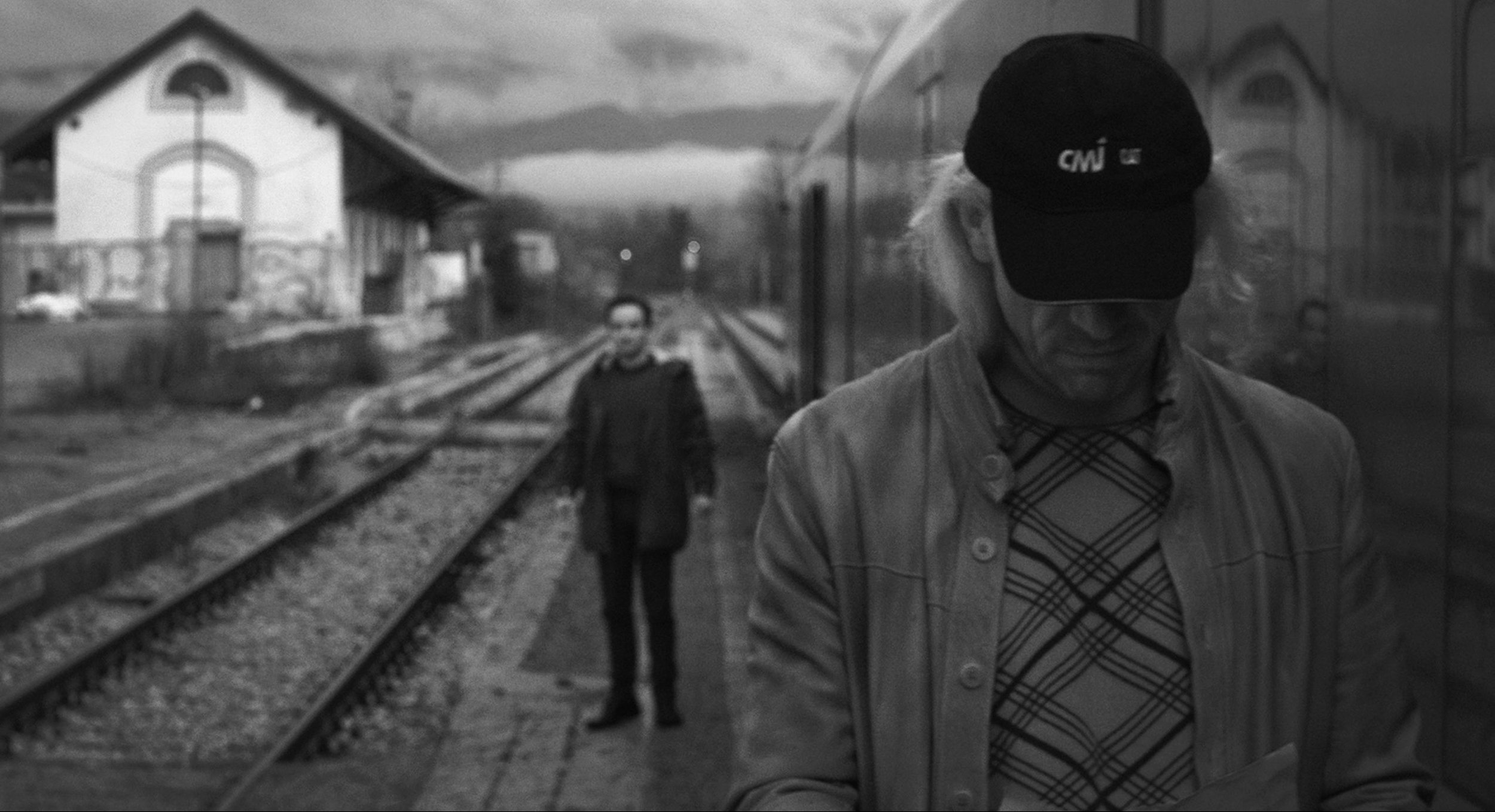VIFF 2022 | Movie Review: "Other Cannibals" an Audacious and Avant-Garde Debut
10/12 ForReel | 4/5 Stars
Amidst lurching steel machines—which appear almost organic in the way they sweat and exhale—a man discovers the impetus to commit the unspeakable. This unspeakable impulse—which is overtly referenced only in the film’s title, and only vaguely hinted at throughout the course of the film itself—is an impulse born of such common drudgery that it becomes a pursuit not of coldblooded malice, but of ineptitude and tedium. Francesco Sossai’s Other Cannibals is a work of horror-realism so mired in its characters’ misguided meandering that it becomes something else entirely, a stark black almost-comedy of errors about two outcasts trying desperately to sink their teeth into life itself.
Whereas Julia Ducournau laced a story of cannibalism into the teen coming-of-age/sexual awakening film with 2016’s Raw, Sossai envisions psychopathic urges emerging out of much bleaker circumstances. Photographed in black and white, and set in the desolated Dolomites region of Italy, Other Cannibals sets up a world more akin to that in Lynch’s Eraserhead than anything else, where disillusioned, middle-aged men traipse around drab factory settings and confront the terrors of domestic living. Our main character is Fausto (played by Walter Giroldini), who looks a little bit like another of Lynch’s creations, Killer BOB, and works to fabricate the aforementioned machines (“temporarily,” he says, even though he has been at the same factory of twenty years). By some unexplained means (a web forum, an app?) Fausto comes to link up with the tight-lipped Ivan (Diego Pagotto), a diminutive man about Fausto’s age who is working to get his PhD in philosophy. It is clear the two met anonymously, and have little in common, but it is with a shared, unspoken understanding that they abscond to a shabby and isolated building for the weekend, presumably intent on procuring for themselves the forbidden meat.
Sossai and co-screenwriter Adriano Candiago keep us in the dark when it comes to much of what is really going on. A scene in a hardware store, in which Fausto and Ivan gather their murder weapons, makes fairly evident the horrid crime the two intend to commit, but the overarching master plan (if there is one), the intended victim(s), and the men’s feelings towards one another are details that aren’t fully divulged. (We don’t even know if either of the men has tasted flesh before, or if their blind date marks their first foray.) But the morsels of information Sossai does grant us, sparse as they are, do compose a compelling portrait of unique melancholy, of downtrodden men trying to reconcile their sadistic desires with the folly and desperation inherent in their modern struggles.
Taking a page out of the book of Hungarian director Béla Tarr, Sossai’s Other Cannibals works to condemn as much as it does work to redeem the misunderstood deviants of its barren world. Sossai and cinematographer Giulia Schelhas even adopt Tarr’s methods of shooting in the back half of the film, using static long takes to fixate on Fausto and Ivan’s actions as they progress from humourous to pitiable before the camera even cuts. Preceding these shots, we get moments defined by handheld camerawork and intense close ups, calling to mind Sean Price Williams’ collaborative efforts with Safdies. An early scene, in which Fausto has to convince his nagging mother and sister to let him get away for the weekend, feels like it was ripped straight out of a Safdies bros. picture, the camera bouncing between disarming close ups of characters delivering rapid-fire dialogue so as to keep you consistently on-edge. One might actually say that Other Cannibals stands at the intersection between the Safdies and Tarr, the way it seems at times frenetic and stress-driven, and at others funereal and lethargic.
For some audiences, these two camps of film school may seem to clash more than they coalesce. With this considered, it may be best to consider Other Cannibals as a work of acquired taste, especially given its morbid subject matter (and the extended scene of a un-simulated pig slaughter). But while there is much that is grim and squirm inducing, there is also a lot that is oddly arresting. Sossai’s characters are so subsumed by the humdrum-ness of their lives that it is hard not to see oneself in their frustrations, especially when it is surreal beauty and poignancy that emerges from these frustrations.
This said, Other Cannibals should not be considered an exercise in making us understand or side with humanity’s more monstrous impulses. Sossai adheres to a level of ambiguousness that always keeps us at a distance from his narrative, and his application of dark humour assures you will be quicker to laugh derisively than you will be to empathize. Still, Sossai wrings a disarming amount of humanity out of his depraved scenarios. For him accomplish this in a debut feature, while also infusing his final product in such a distinct aesthetic, should be considered nothing short of a marvel.


